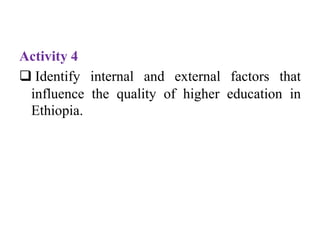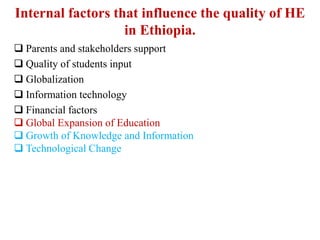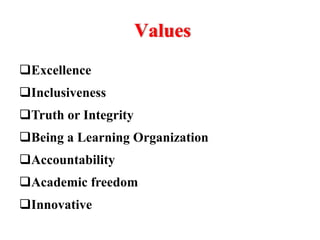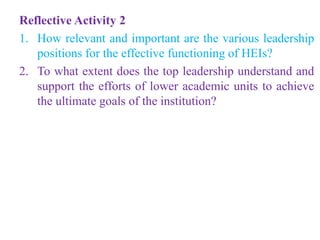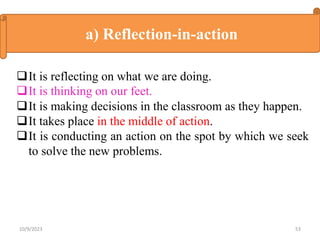This document provides information about a training organized for Higher Diploma Program candidates at Wolkite University in Ethiopia. It outlines the expectations, management, and objectives of the program.
The key expectations of candidates are to actively participate in all sessions, complete assignments demonstrating reflective thinking, and prepare documents like action research projects and session plans. Program management details attendance requirements and consequences for incomplete work.
The objective of the program is to enable candidates to develop teaching skills, serve as role models, provide high-quality learning for students, and engage in practices like action research. The program consists of 4 modules focused on understanding higher education, teaching and learning, school placement, and action research.





























![The Challenges of HEIs …Contd.
the lowest higher education enrollment ratio.
Educational resources are very limited
the poor quality of higher education institutions
corruption found in many of the governments adds to the limited
funding of higher
education (Byerlee, 2013)
A World Bank study of higher education and economic
development in SSA stated, “[Donor institutions] have neglected
tertiary education as an added means to improve economic
growth and alleviate poverty](https://image.slidesharecdn.com/hdpmoduleone1-231009092355-606640c1/85/HDP-Module-One-1-pptx-30-320.jpg)



